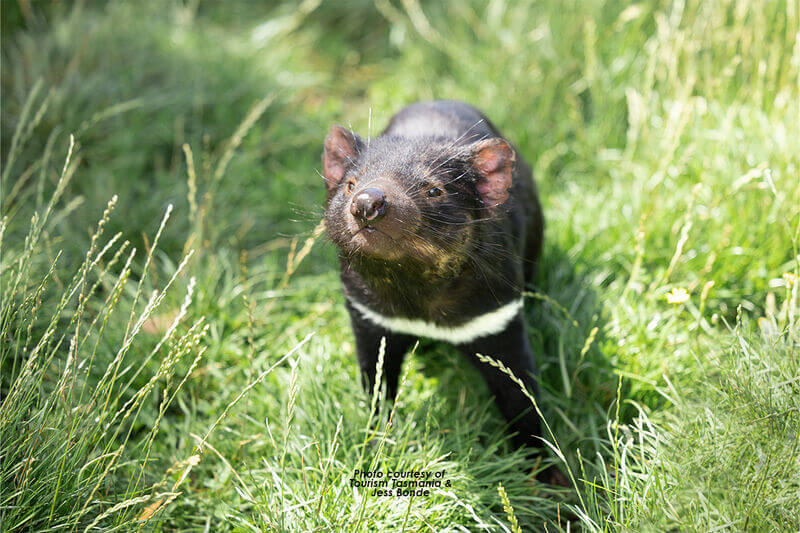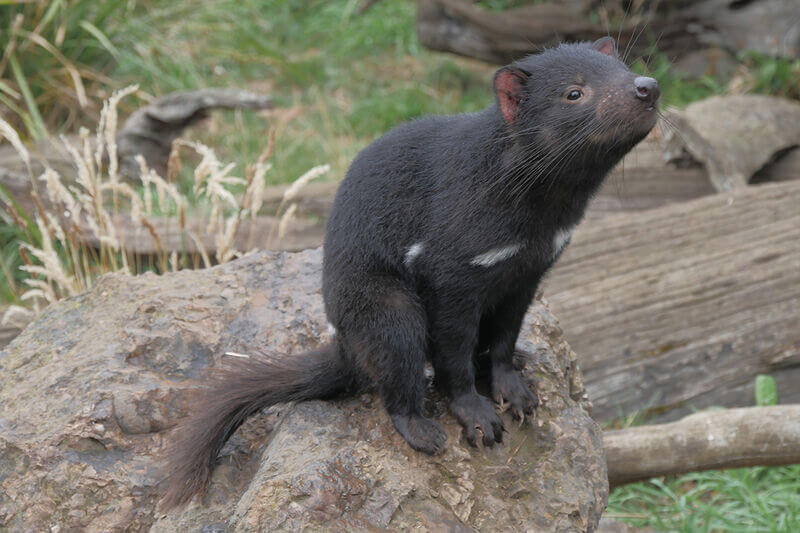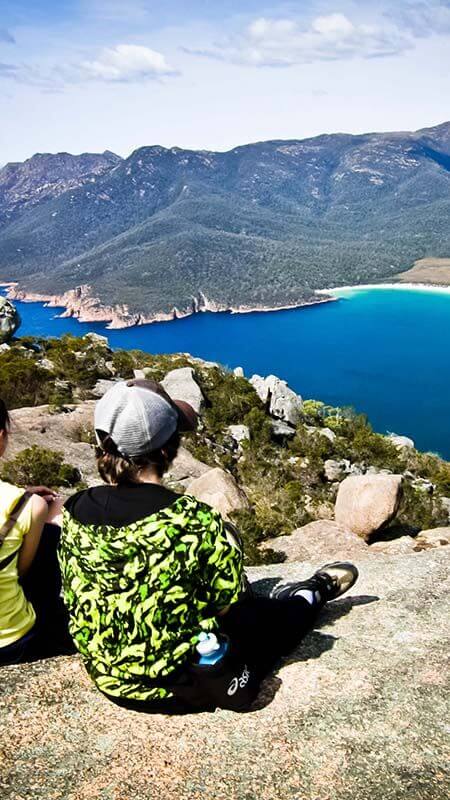Our Tassie Devil
 The Tassie Devil is pretty special to us and most people have heard something about him, whether they think he is just a cartoon or an actual animal he is always interesting and a little Feral.
The Tassie Devil is pretty special to us and most people have heard something about him, whether they think he is just a cartoon or an actual animal he is always interesting and a little Feral.
If you stay at our Motel, Devils in the Dark Bicheno is a great tour that takes you out to see the Devils in their natural enviroment. Also Natureworld has a great collection of Native Tasmanian wildlife, Both of these are worth a visit if you are staying a few days.
As comical as it is, the familiar Looney Tunes portrayal of a Tasmanian devil as a seething, snarling, insatiable lunatic is, at times, not all that far from the truth.
Tasmanian devils have a notoriously cantankerous disposition and will fly into a maniacal rage when threatened by a predator, fighting for a mate, or defending a meal. Early European settlers dubbed it a "devil" after witnessing such displays, which include teeth-baring, lunging, and an array of spine-chilling guttural growls.
These famously feisty mammals have a coat of coarse brown or black fur and a stocky profile that gives them the appearance of a baby bear. Most have a white stripe or patch on their chest and light spots on their sides or rear end. They have long front legs and shorter rear legs, giving them a lumbering, piglike gait.
The Tasmanian devil is the world's largest carnivorous marsupial, reaching 30 inches (76 centimeters) in length and weighing up to 26 pounds (12 kilograms), although its size will vary widely depending on its specific range and the availability of food. Its oversize head houses sharp teeth and strong, muscular jaws that can deliver, pound for pound, one of the most powerful bites of any mammal.
Tasmanian devils are strictly carnivorous, surviving on small prey such as snakes, birds, fish, and insects and frequently feasting communally on carrion. They are at their most rowdy when jockeying for position on a large carcass. Like other marsupials, when they are well fed, their tails swell with stored fat.
Devils are solitary and nocturnal, spending their days alone in hollow logs, caves, or burrows, and emerging at night to feed. They use their long whiskers and excellent sense of smell and sight to avoid predators and locate prey and carrion. They'll eat pretty much anything they can get their teeth on, and when they do find food, they are voracious, consuming everything—including hair, organs, and bones.
Mothers give birth after about three weeks of pregnancy to 20 or 30 very tiny young. These raisin-size babies crawl up the mother's fur and into her pouch. However, the mother has only four nipples, so only a handful of babies survive. Infants emerge after about four months and are generally weaned by the sixth month and on their own by the eighth.
Once abundant throughout Australia Tasmanian devils are now indigenous only to the island state of Tasmania. Their Tasmanian range encompasses the entire island, although they are partial to coastal scrublands and forests. Biologists speculate that their extinction on the mainland is attributable to the introduction of Asian dogs, or dingoes.
Efforts in the late 1800s to eradicate Tasmanian devils, which farmers erroneously believed were killing livestock (although they were known to take poultry), were nearly successful. In 1941, the government made devils a protected species, and their numbers have grown steadily since.
Survival Threatened
Tragically, though, a catastrophic illness discovered in the mid-1990s has killed tens of thousands of Tasmanian devils. Called devil facial tumor disease (DFTD), this rapidly spreading condition is a rare contagious cancer that causes large lumps to form around the animal's mouth and head, making it hard for it to eat. The animal eventually starves to death. Animal health experts are sequestering populations where the disease has not yet appeared and are focusing on captive breeding programs to save the species from extinction. Because of the outbreak, the Australian government has listed Tasmanian devils as vulnerable.









